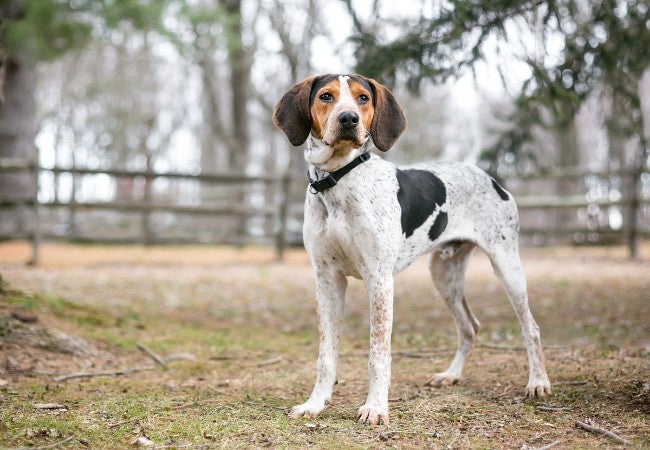A Vet’s Guide to Hound Dog Breeds 2025 🐕🦺

In this article
A Vet’s Guide to Hound Dog Breeds 2025 🐕🦺
By Dr. Duncan Houston BVSc
Hello! I’m Dr Duncan Houston BVSc, veterinarian and founder of Ask A Vet. Hound dogs are a diverse group originally bred for hunting—categorized as either sighthounds or scenthounds. Whether chasing game or trailing scents, these breeds bring strong instincts, distinctive personalities, and unique care needs. This vet-approved guide breaks down the top breeds, their traits, training tips, exercise demands, and health considerations to support informed, loving care in 2025. 🩺🐾
1. What Defines a Hound Dog?
Hounds encompass two main types:
- Sighthounds: e.g. Greyhound, Afghan Hound—visual speedsters relying on excellent eyesight.
- Scenthounds: e.g. Beagle, Bloodhound—developed to trail by scent, often with powerful noses and distinctive baying.
These breeds often possess strong instincts: sighthounds need sprint outlets, scenthounds need tracking and nose-work enrichment.
2. Popular Sighthound Breeds
🐎 Greyhound
- Temperament: Gentle, couch-loving, affectionate.
- Exercise: Short, fast runs are enough—then plenty of relaxation.
- Health: Watch for bloat and thin skin—avoid rough play, use aspirations.
- Vet Tip: Use soft bedding and monitor weight for joint health.
🧬 Afghan Hound
- Temperament: Aloof yet loyal, regal and sometimes silly.
- Exercise: Needs daily freedom to run in safe, enclosed areas.
- Grooming: High—requires regular brushing to prevent mats.
- Health: Sensitive to anesthesia; monitor hips and allergies.
🇮🇹 Ibizan Hound
- Temperament: Intelligent, stubborn, playful—great with consistent leadership.
- Exercise: High—needs tall, secure fencing as escape artists.
- Health: Generally healthy but with eye screening and anesthesia sensitivity.
3. Prominent Scenthound Breeds
🐶 Beagle
- Temperament: Friendly, curious, social—great family dogs.
- Exercise: Strong scent drive—best with sniffing walks and playtime.
- Health: Watch weight, ear infections, epilepsy.
- Vet Tip: Use puzzle feeders to channel sniffer instincts.
👃 Bloodhound
- Temperament: Gentle and dedicated trackers; less trainable due to scent fixation.
- Exercise: Requires secure off-leash space to trail.
- Health: High bloat risk, ear/eye care needed.
- Vet Tip: Feed in raised bowls and monitor GI signs closely.
📣 American Foxhound & Harrier
- Temperament: Pack-oriented, endurance-loving, cheerful companions.
- Exercise: Requires long runs or hunts—daily commitment.
- Health: Monitor hips and weight.
- Vet Tip: Socialization and recall training essential for scent-focused breeds.
4. Training & Exercise
- Leash & Recall: Scenthounds can ignore commands—use secure fencing and steady recall routines.
- Mental Enrichment: Nose work, puzzles, food scent games vital for scent-hunting breeds.
- Baying Control: Train quiet signals to manage vocal behavior.
- Gentle Runs: Sighthounds benefit from short sprints—avoid overexertion in hot weather.
5. Health Considerations & Vet Tips
Expect common issues:
- Bloat: Sighthounds and large hounds are predisposed—feed small meals and limit post-meal exercise.
- Skin & Ears: Long ears trap moisture, and sighthound skin is fragile—inspect regularly.
- Joint Health: Active breeds need weight management and joint supplements.
- Anesthesia Caution: Hounds like Afghan and Ibizan are sensitive—ensure vet uses correct protocols.
6. Grooming & Coat Care
- Sighthounds: short coats—basic brushing.
- Afghans and similar breeds: daily grooming required.
- Scenthounds: Weekly brushing + ear cleaning/patrolling for infections.
7. Lifespan & Suitability
Most hounds live 10–14 years, with small-medium scenthounds often reaching mid-teens. They can thrive in families but require commitment to training and exercise, especially those with strong chasing instincts.
8. Enrichment & Home Tools
Support hounds with:
- Ask A Vet: Telehealth support for behavior training, GI issues, joint management, and anesthesia planning.
9. Real-Life Case Study
Case: Bella the mixed scenthound
Bella was adopted with strong wandering instincts. Introducing nose-work games, daily off-leash in safe zones, and professional obedience classes with quiet signals helped reduce her baying and improved household behavior within six weeks. Her owner also used wheel-based puzzles to manage her energy indoors.
10. Choosing Your Hound—Things to Consider
- Analyze your energy level and space (yard, running areas).
- Consider size—small scenthounds vs large sighthounds with bigger needs.
- Expect grooming time per breed.
- Plan for mental enrichment and training consistency.
- Ensure regular vet screenings: hips, eyes, ears, GI health.
📌 Final Thoughts from a Vet
Hounds bring richness to life—painting your routine with joy, exploration, and companionship. From bounding across fields to cozying up indoors, their loyalty and spirit shine. With thoughtful care—training, exercise, grooming, and veterinary oversight—you’ll share a deeply rewarding relationship. Ready for a hound in your life? Ask A Vet is here to support every wag of the journey—especially with puzzle feeders and calming products from our trusted partners. 🐾❤️






